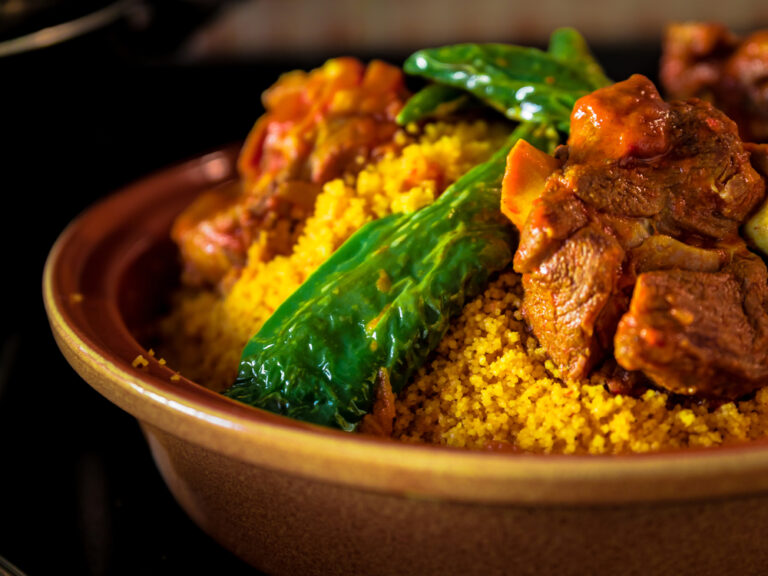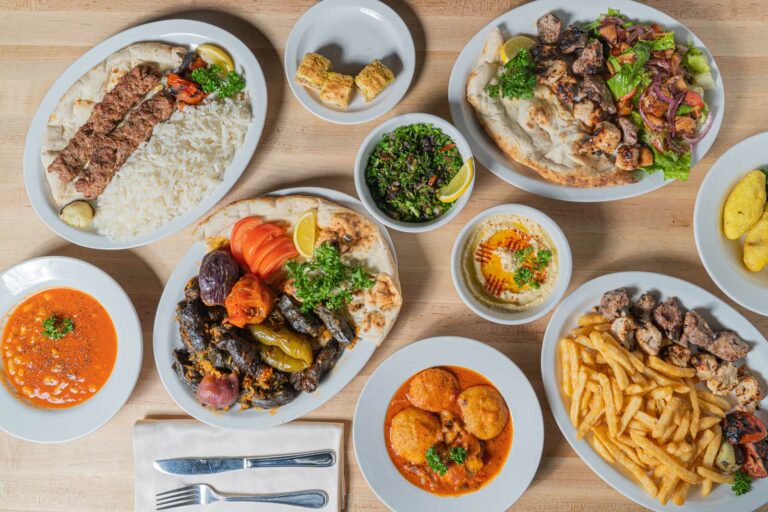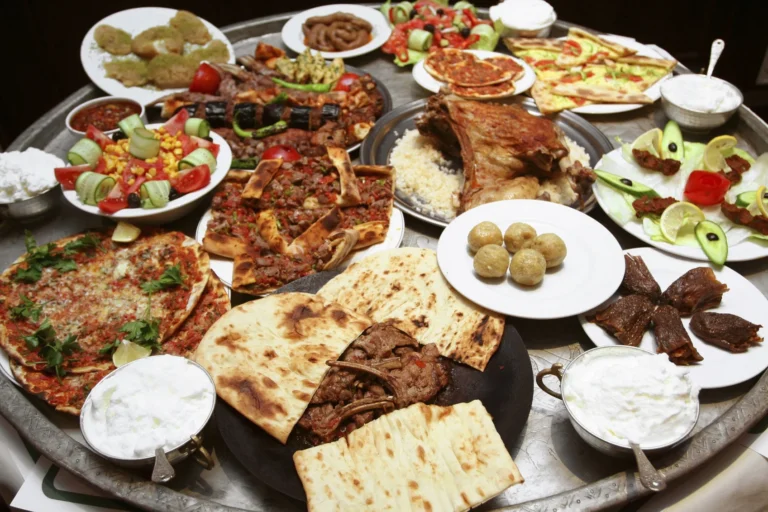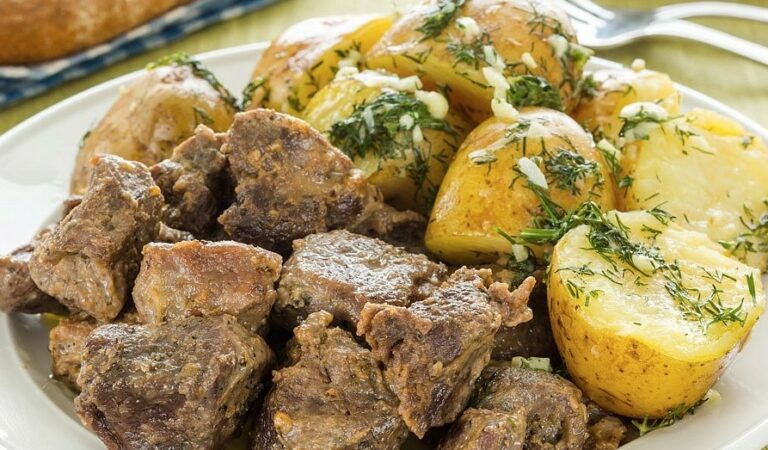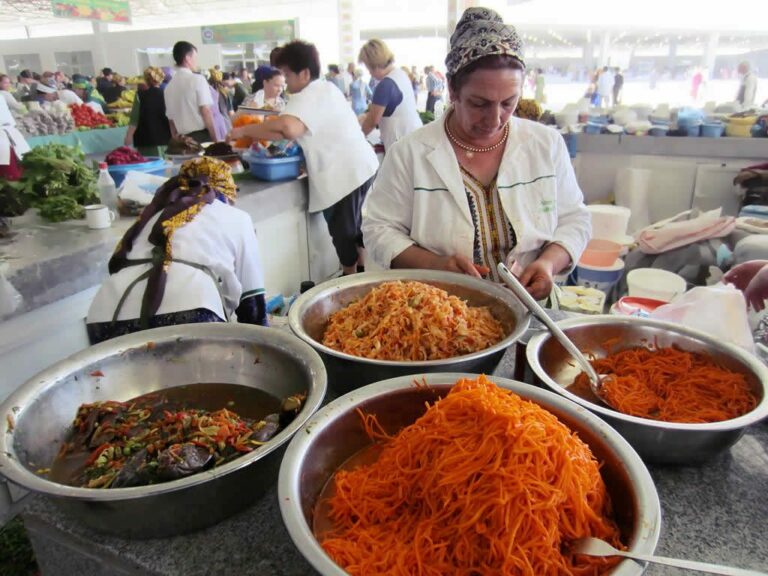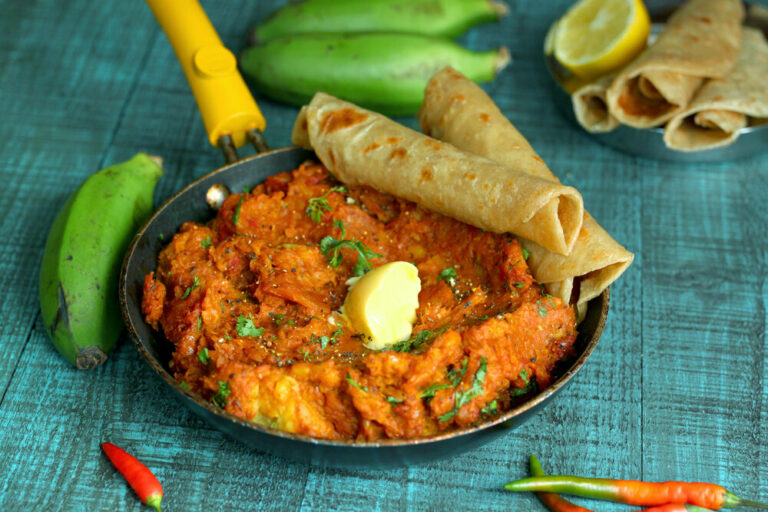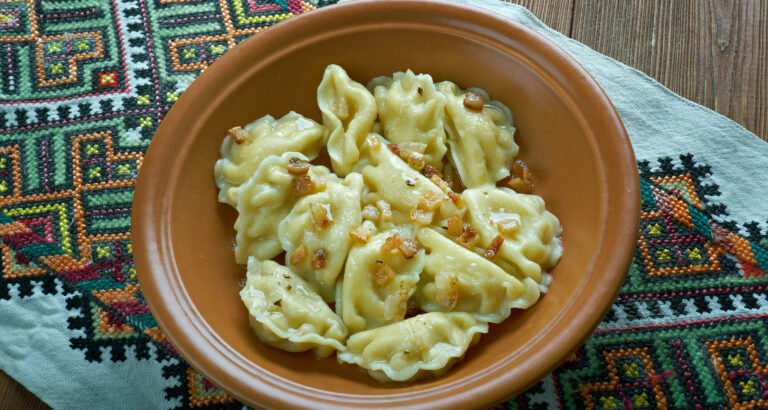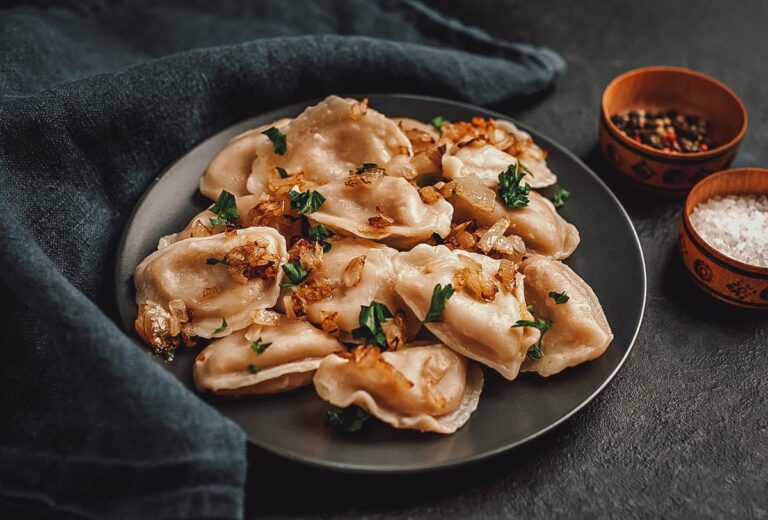Introduction: Tunisian cuisine at the crossroads of Mediterranean and Arab cuisine
Tunisia is a North African country that lies on the Mediterranean coast. Its cuisine is a result of the interaction between the Mediterranean and Arab cultures. Tunisian cuisine is known for its rich flavors and diverse ingredients. It is characterized by a blend of Arabic, Mediterranean, and Berber influences. Tunisian cuisine is unique and delicious, and it is a must-try for food enthusiasts.
The Mediterranean influence on Tunisian cuisine
The Mediterranean has had a significant influence on Tunisian cuisine. Tunisian cuisine has been shaped by the diverse ingredients that are found in the Mediterranean region. Tunisian cuisine uses a lot of seafood, olive oil, tomatoes, and peppers, which are all common ingredients in Mediterranean cuisine. Tunisian cuisine also uses a lot of herbs and spices that are found in the Mediterranean region, such as basil, thyme, and oregano. The use of fresh and locally sourced ingredients is a hallmark of Tunisian cuisine, and this is also a characteristic of Mediterranean cuisine.
The Arab influence on Tunisian cuisine
The Arab influence on Tunisian cuisine is also significant. Arab cuisine is known for its rich and complex flavors, and this is reflected in Tunisian cuisine. Tunisian cuisine uses a lot of spices that are common in Arab cuisine, such as cumin, coriander, and cinnamon. The use of dried fruits, such as dates and figs, is also common in Arab cuisine and is a prominent feature of Tunisian cuisine. Arab cuisine also uses a lot of lamb and beef, and this is reflected in Tunisian cuisine, which uses a lot of meat-based dishes.
The main ingredients and spices used in Tunisian cuisine
Tunisian cuisine uses a variety of ingredients and spices to create its unique flavors. The most common ingredients used in Tunisian cuisine include seafood, lamb, beef, and poultry. Vegetables such as tomatoes, peppers, and onions are also commonly used. Tunisian cuisine also uses a lot of herbs and spices, such as cumin, coriander, cinnamon, and saffron. Harissa, a spicy paste made from chili peppers, garlic, and olive oil, is a staple in Tunisian cuisine and is used to add heat and flavor to dishes.
The most popular Tunisian dishes and their origins
Some of the most popular Tunisian dishes include couscous, brik, and tajine. Couscous is a dish made from steamed semolina, served with vegetables and meat. Brik is a crispy pastry filled with egg, tuna, or meat. Tajine is a slow-cooked stew made with lamb, chicken, or beef, and a variety of vegetables and spices. These dishes have their origins in the Berber and Arabic cultures that have influenced Tunisian cuisine.
Conclusion: the unique blend of flavors in Tunisian cuisine
Tunisian cuisine is a unique blend of Mediterranean and Arab flavors and ingredients. It is a reflection of the country’s history and culture. Tunisian cuisine is known for its rich and complex flavors and the use of fresh, locally sourced ingredients. Tunisian cuisine is a must-try for food enthusiasts who are looking for something different and exciting.

